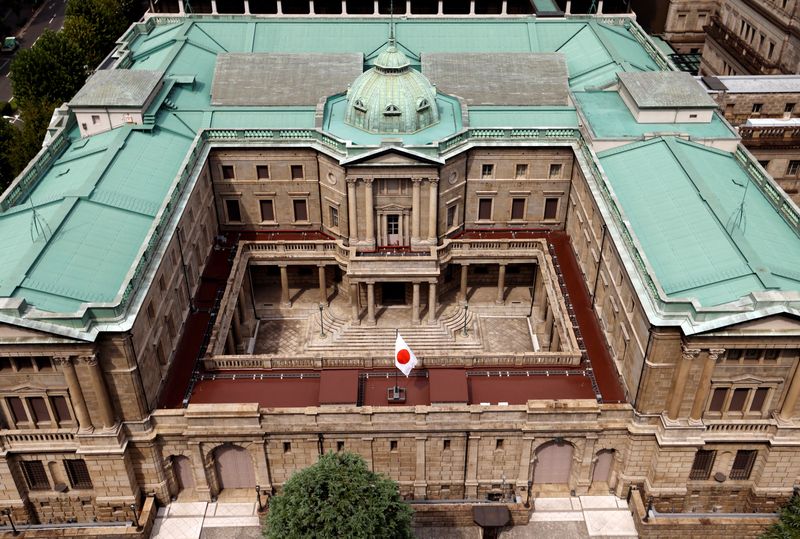By Leika Kihara
TOKYO (Reuters) -Many Bank of Japan policymakers agreed the economy was making progress in meeting the necessary conditions for raising interest rates further, even as they backed a pause until global market uncertainties diminish, minutes of their September meeting showed.
The nine-member board also discussed how to improve the way the BOJ communicates its policy intention to markets, with one flagging the idea of disclosing each member’s forecast on the future interest rate path, according to the minutes released on Wednesday.
The debate underscores the difficulty the BOJ faces in weighing growing positive signs in the economy, and external risks such as volatile financial markets and uncertainty over the global economic outlook.
“Many members said wages were clearly on the rise,” and saw the need to scrutinise whether inflation-adjusted wages will remain positive in the long-term horizon.
“A few members said steady progress was seen in companies’ efforts to pass on rising labour costs mainly for services,” the minutes showed, quoting one member as saying the driver of inflation was gradually shifting to wages from import costs.
BOJ Governor Kazuo Ueda has said Japan must see wages rise sustainably, and lead to price hikes for services, for the central bank to consider hiking interest rates again.
At the September meeting, the BOJ kept interest rates steady at 0.25%, with Ueda signalling it was in no rush to raise borrowing costs further as fears of U.S. recession kept markets jittery and clouded the global economic outlook.
“A few members said the BOJ can afford to spend time scrutinising the fallout from overseas and market developments,” as the yen’s recent rebound would reduce inflationary pressure from rising import costs, according to the minutes.
One member said the BOJ should hold off on raising rates until overseas and market uncertainties diminish, while another called for the need to focus on downside risks to the economy, the minutes showed.
A third member, however, said the BOJ “could find it appropriate to raise rates even when markets are unstable,” adding that the central bank ought to push up its policy target to 1% as soon as the latter half of fiscal 2025.
At a subsequent meeting in October, the BOJ kept policy steady but said risks around the U.S. economy were somewhat subsiding, leaving the door open for a near-term rate hike.
A slim majority of economists polled by Reuters on Oct. 3-11 expected the BOJ to forgo a hike this year, though most expect one by March.

